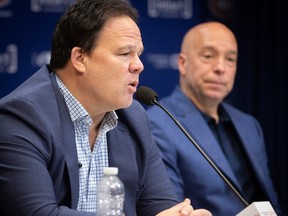Politics
Analysis | How to reverse the politics of coronavirus vaccines, as demonstrated by Fox News – The Washington Post
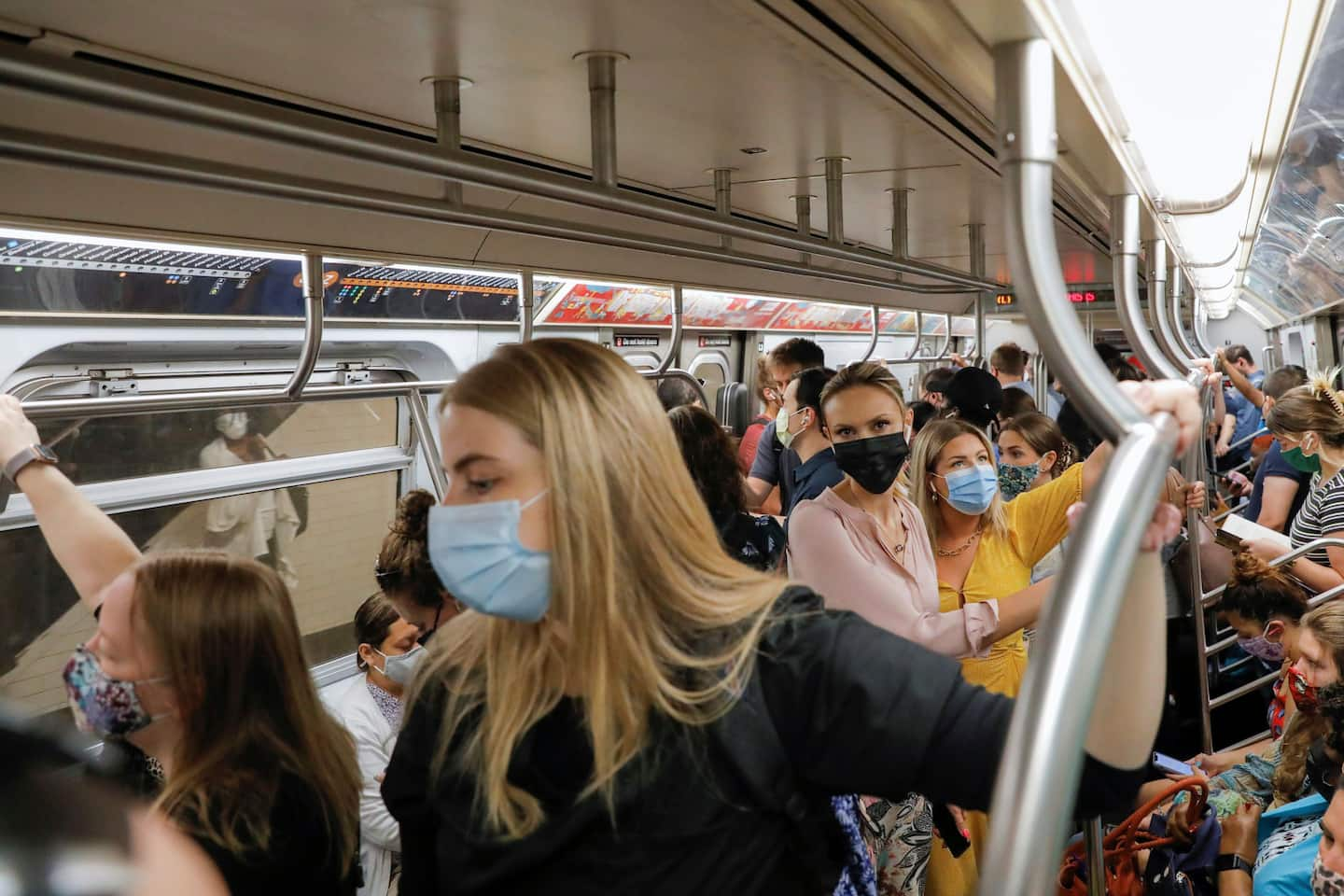
Why? Well, because a lot of people live in big cities, and big cities are often heavily Democratic. While 55 percent of Republicans live in counties that voted for Trump, 55 percent also live in the 300-odd places that are the most heavily populated 10 percent of counties in the United States. (More than three-quarters of Democrats live in those counties; as a corollary, about 73 percent of Democrats live in counties won by Biden.)
The point is straightforward: Places with more people have more people. This is not what one would call a staggering insight, but it’s worth reiterating since people tend to think of heavily populated places as overwhelmingly Democratic. In fact, the most populous counties in the country are less robustly Democratic than the least populous ones are Republican. The 623 least populous counties preferred Trump by 46 points. The 623 most populous counties preferred Biden by less than one-third of that margin.
(The chart below looks at deciles of counties; that is, one-tenth of all counties, ranked from the least to the most populous.)
Why are we going over this? Because of the attempt by Fox News’s Jesse Watters to suggest that, of the current surge in coronavirus infections,
“all of the hot spots are in huge Democrat cities.”
He said this on Friday, even as he (thankfully) encouraged getting more people vaccinated. But he did so while clearly attempting to cast blame for the surge on Democrats — trying to reverse the recent emphasis on the surge of infections in heavily Republican areas, since those places are less likely to be heavily vaccinated. In a statement provided to Mediaite, he tried to defend the claim.
The Centers for Disease Control and Prevention’s categorization of places with substantial rates of transmission “applies to nearly every major metropolitan area in the United States … Los Angeles, New York, Atlanta, Houston, Miami, St. Louis, etc. … according to the ‘hot spot’ county map highlighted on the CDC website,” the statement said. “Plus, anyone with common sense understands that 3.5M unvaccinated New York residents living within 300 square miles of each other, is more of a so-called ‘hot spot,’ than just 388,000 unvaccinated Wyoming residents living within 98,000 square miles of each other.”
This is pretty lazy stuff, even for Watters. He first cites the CDC’s definition, pointing out that applies to big cities — though without pointing out that it also applies to hundreds of small counties. Then he throws out the CDC’s definition of a hot spot in favor of his own, in which he begs the question by declaring a hot spot to depend on population density.
So let’s look at the actual numbers, shall we?
There is, in fact, a relationship between the average number of new cases in a county and the county population, according to counties for which we have data. Los Angeles County has seen a lot of new cases in the past two weeks (which is the time period indicated on the graph below), but it also has millions of residents.
But the CDC, not new to this, is familiar with how population works. So it defines community transmission relative to population. It uses two metrics — the rate of cases per 100,000 residents and the rate of positive tests — to determine the places with “substantial” or “high” transmission.
If we plot population against the rate of cases per 100,000 residents, the picture shifts. In the least-populated decile of counties, 69 percent have transmission rates above the median. In the most-populated decile, 54 percent do.
We can look at this another way. Over the past two weeks, most new cases have been in the most populous places for the same reason that so many Trump voters live in Biden counties. Adjusted for population, though, the hardest-hit places shift to the middle of the pack.
If Los Angeles was seeing the same rate of infections as the hardest-hit small county — Sullivan County, Mo. — it would be seeing ten times the number of new cases each day.
It’s true, as Watters points out, that more unvaccinated people live in blue states, since those states have more people. But as of two weeks ago, more unvaccinated adults lived in red states even though those states have fewer adult residents. This issue of vaccination is entirely the point, of course, with places that have lower rates of vaccination seeing more new cases per resident.
The vaccination data, compiled by the CDC, are imperfect, but you can clearly see the pattern below. More than a third of the country lives in the 2,300-odd counties in which more than half the population hasn’t received at least one dose of the vaccine.
What’s particularly alarming is how many seniors have not been fully vaccinated. In more than half of counties, according to the CDC data, fewer than half of those over age 65 have been fully vaccinated.
But this is just running Watters’s playbook in reverse. In the most densely populated counties, home to two-thirds of the population, more than three-quarters of those aged 65 and over have been fully vaccinated.
The risk remains high in places with lower vaccination rates, not just places with more unvaccinated people. Those places are generally places that voted more heavily for Trump in 2020. And the correlation between the two makes sense, given Trump’s — and Fox News’s — rhetoric.
“We have to do away with all the politics and just try to get people vaxxed,” Watters said on Friday. Fine. Let’s.
Politics
Trump faces political risks as trial begins – NBC News


IE 11 is not supported. For an optimal experience visit our site on another browser.
-


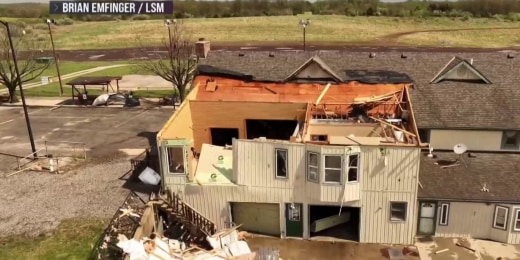
More than 20 tornadoes reported as tens of millions face severe weather threat
00:57
-



Shoe cobbler becomes unlikely TikTok star
01:48
-



First jurors selected to serve in Trump hush money trial
03:07
-



Israel’s military vows response to Iranian attack
01:31
-



DOJ reportedly set to sue Live Nation in antitrust challenge
00:52
-



Boeing whistleblower says 787 Dreamliner has production flaw
03:25
-


USC cancels commencement speech by class valedictorian
01:36
-

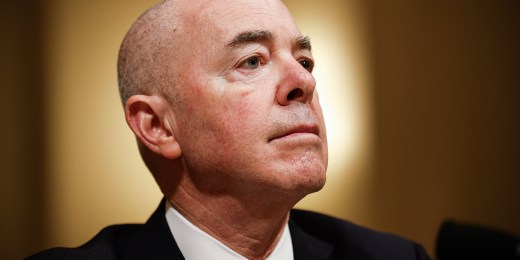
House delivers articles of impeachment against Mayorkas to Senate
01:49
-

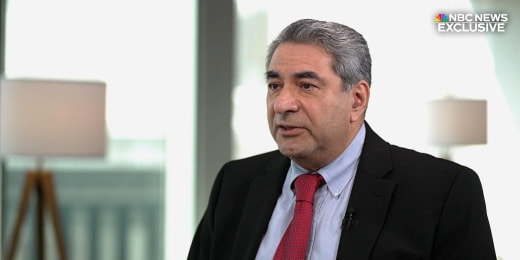
Boeing engineer says worldwide 787 fleet ‘needs attention’
00:20
-

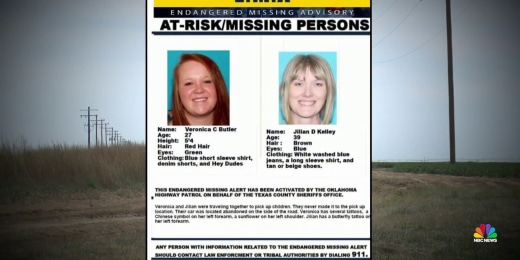
Two bodies found in Oklahoma are believed to be missing Kansas women
01:42
-


Video shows men damaging ancient rocks in national park
01:46
-


White House tries to prevent a wider war in the Mideast
02:01
-


Israel’s military vows military response after Iran attack
02:59
-

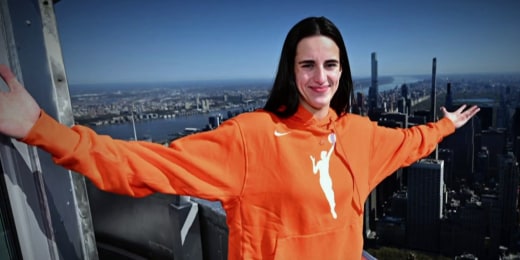
Caitlin Clark talks about her WNBA dream
01:52
-
Now Playing


Trump faces political risks as trial begins
00:53
-
UP NEXT


Jury selection begins in Trump’s hush money trial
02:54
-


Arrests made in connection to disappearance of two Kansas moms
01:30
-

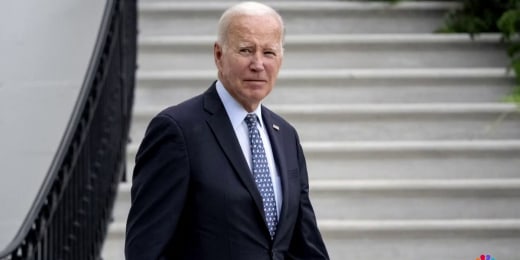
President Biden urges restraint after Iran’s attack on Israel
03:19
-
UP NEXT



More than 20 tornadoes reported as tens of millions face severe weather threat
00:57
-



Shoe cobbler becomes unlikely TikTok star
01:48
-



First jurors selected to serve in Trump hush money trial
03:07
-



Israel’s military vows response to Iranian attack
01:31
-



DOJ reportedly set to sue Live Nation in antitrust challenge
00:52
-



Boeing whistleblower says 787 Dreamliner has production flaw
03:25
Politics
Florida's Bob Graham dead at 87: A leader who looked beyond politics, served ordinary folks – Toronto Star
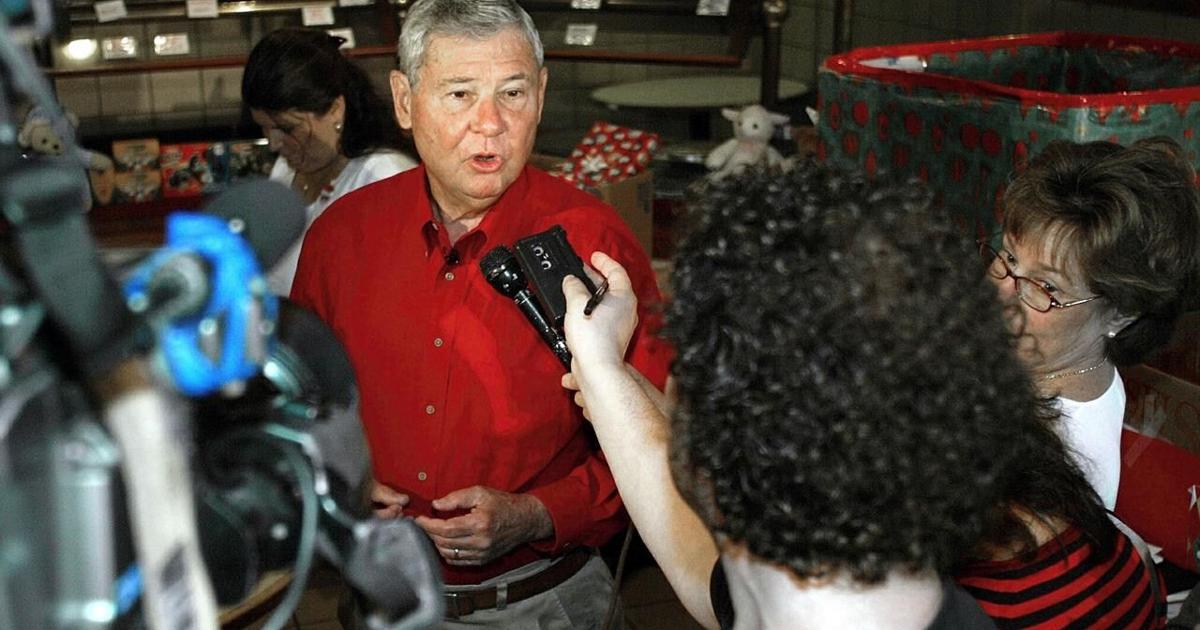

/* OOVVUU Targeting */
const path = ‘/news/world/united-states’;
const siteName = ‘thestar.com’;
let domain = ‘thestar.com’;
if (siteName === ‘thestar.com’)
domain = ‘thestar.com’;
else if (siteName === ‘niagarafallsreview.ca’)
domain = ‘niagara_falls_review’;
else if (siteName === ‘stcatharinesstandard.ca’)
domain = ‘st_catharines_standard’;
else if (siteName === ‘thepeterboroughexaminer.com’)
domain = ‘the_peterborough_examiner’;
else if (siteName === ‘therecord.com’)
domain = ‘the_record’;
else if (siteName === ‘thespec.com’)
domain = ‘the_spec’;
else if (siteName === ‘wellandtribune.ca’)
domain = ‘welland_tribune’;
else if (siteName === ‘bramptonguardian.com’)
domain = ‘brampton_guardian’;
else if (siteName === ‘caledonenterprise.com’)
domain = ‘caledon_enterprise’;
else if (siteName === ‘cambridgetimes.ca’)
domain = ‘cambridge_times’;
else if (siteName === ‘durhamregion.com’)
domain = ‘durham_region’;
else if (siteName === ‘guelphmercury.com’)
domain = ‘guelph_mercury’;
else if (siteName === ‘insidehalton.com’)
domain = ‘inside_halton’;
else if (siteName === ‘insideottawavalley.com’)
domain = ‘inside_ottawa_valley’;
else if (siteName === ‘mississauga.com’)
domain = ‘mississauga’;
else if (siteName === ‘muskokaregion.com’)
domain = ‘muskoka_region’;
else if (siteName === ‘newhamburgindependent.ca’)
domain = ‘new_hamburg_independent’;
else if (siteName === ‘niagarathisweek.com’)
domain = ‘niagara_this_week’;
else if (siteName === ‘northbaynipissing.com’)
domain = ‘north_bay_nipissing’;
else if (siteName === ‘northumberlandnews.com’)
domain = ‘northumberland_news’;
else if (siteName === ‘orangeville.com’)
domain = ‘orangeville’;
else if (siteName === ‘ourwindsor.ca’)
domain = ‘our_windsor’;
else if (siteName === ‘parrysound.com’)
domain = ‘parrysound’;
else if (siteName === ‘simcoe.com’)
domain = ‘simcoe’;
else if (siteName === ‘theifp.ca’)
domain = ‘the_ifp’;
else if (siteName === ‘waterloochronicle.ca’)
domain = ‘waterloo_chronicle’;
else if (siteName === ‘yorkregion.com’)
domain = ‘york_region’;
let sectionTag = ”;
try
if (domain === ‘thestar.com’ && path.indexOf(‘wires/’) = 0)
sectionTag = ‘/business’;
else if (path.indexOf(‘/autos’) >= 0)
sectionTag = ‘/autos’;
else if (path.indexOf(‘/entertainment’) >= 0)
sectionTag = ‘/entertainment’;
else if (path.indexOf(‘/life’) >= 0)
sectionTag = ‘/life’;
else if (path.indexOf(‘/news’) >= 0)
sectionTag = ‘/news’;
else if (path.indexOf(‘/politics’) >= 0)
sectionTag = ‘/politics’;
else if (path.indexOf(‘/sports’) >= 0)
sectionTag = ‘/sports’;
else if (path.indexOf(‘/opinion’) >= 0)
sectionTag = ‘/opinion’;
} catch (ex)
const descriptionUrl = ‘window.location.href’;
const vid = ‘mediainfo.reference_id’;
const cmsId = ‘2665777’;
let url = `https://pubads.g.doubleclick.net/gampad/ads?iu=/58580620/$domain/video/oovvuu$sectionTag&description_url=$descriptionUrl&vid=$vid&cmsid=$cmsId&tfcd=0&npa=0&sz=640×480&ad_rule=0&gdfp_req=1&output=vast&unviewed_position_start=1&env=vp&impl=s&correlator=`;
url = url.split(‘ ‘).join(”);
window.oovvuuReplacementAdServerURL = url;
TALLAHASSEE, Fla. (AP) — A leader like Bob Graham would be a unicorn in the hyper-partisan politics of today.
The former Florida governor and U.S. senator wasn’t a slick, slogan-spouting politician. He didn’t have an us-against-them mentality. Sometimes, he even came across as more of a kind-hearted professor just trying to make the world a better place.
function buildUserSwitchAccountsForm()
var form = document.getElementById(‘user-local-logout-form-switch-accounts’);
if (form) return;
// build form with javascript since having a form element here breaks the payment modal.
var switchForm = document.createElement(‘form’);
switchForm.setAttribute(‘id’,’user-local-logout-form-switch-accounts’);
switchForm.setAttribute(‘method’,’post’);
switchForm.setAttribute(‘action’,’https://www.thestar.com/tncms/auth/logout/?return=https://www.thestar.com/users/login/?referer_url=https%3A%2F%2Fwww.thestar.com%2Fnews%2Fworld%2Funited-states%2Ffloridas-bob-graham-dead-at-87-a-leader-who-looked-beyond-politics-served-ordinary-folks%2Farticle_0920ca6f-2233-5d7e-b2c9-82330901a187.html’);
switchForm.setAttribute(‘style’,’display:none;’);
var refUrl = document.createElement(‘input’); //input element, text
refUrl.setAttribute(‘type’,’hidden’);
refUrl.setAttribute(‘name’,’referer_url’);
refUrl.setAttribute(‘value’,’https://www.thestar.com/news/world/united-states/floridas-bob-graham-dead-at-87-a-leader-who-looked-beyond-politics-served-ordinary-folks/article_0920ca6f-2233-5d7e-b2c9-82330901a187.html’);
var submit = document.createElement(‘input’);
submit.setAttribute(‘type’,’submit’);
submit.setAttribute(‘name’,’logout’);
submit.setAttribute(‘value’,’Logout’);
switchForm.appendChild(refUrl);
switchForm.appendChild(submit);
document.getElementsByTagName(‘body’)[0].appendChild(switchForm);
function handleUserSwitchAccounts()
window.sessionStorage.removeItem(‘bd-viafoura-oidc’); // clear viafoura JWT token
// logout user before sending them to login page via return url
document.getElementById(‘user-local-logout-form-switch-accounts’).submit();
return false;
buildUserSwitchAccountsForm();
console.log(‘=====> bRemoveLastParagraph: ‘,0);
Politics
The Earthquake Shaking BC Politics


|
|
Six months from now Kevin Falcon is going to be staggering toward a catastrophic defeat for the remnants of the BC Liberals.
But what that will mean for the province’s political future is still up in the air, with the uncertainty increased by two shocking polls that show the Conservatives far ahead of BC United and only a few percentage points behind the NDP.
BC United is already toast, done in by self-inflicted wounds and the arrival of John Rustad and the Conservative Party of BC.
Falcon’s party has stumbled since the decision to abandon the BC Liberal brand in favour of BC United. The change, promoted by Falcon and approved by party members, took place a year ago this week. It was an immediate disaster.
That was made much worse when Rustad relaunched the B.C. Conservatives after Falcon kicked him out of caucus for doubting the basic science of climate change.
Falcon’s party had fallen from 33 per cent support to 19 per cent, trailing the Conservatives at 25 per cent. (The NDP has 42 per cent support.) That’s despite his repeated assurances that voters would quickly become familiar with the BC United brand.
BC United is left with almost no safe seats in this election based on the current polling.
Take Abbotsford West, where Mike de Jong is quitting after 30 years in the legislature to seek a federal Conservative nomination. It’s been a BC Liberal/United stronghold. In 2020 de Jong captured 46 per cent of the votes to the New Democrats’ 37 per cent and the Conservatives’ nine per cent.
But that was when the Conservatives were at about eight per cent in the polls, not 25 per cent.
Double their vote in this October’s election at the expense of the Liberals — a cautious estimate — and the NDP wins.
United’s prospects are even worse in ridings that were close in the 2020 election, like Skeena. Ellis Ross took it for the BC Liberals in 2020 with 52 per cent of the vote to the NDP’s 45 per cent.
But there was no Conservative candidate. Rustad has committed to running a candidate in every riding and the NDP can count on an easy win in Skeena.
It’s the same story across the province. The Conservatives and BC United will split the centre-right vote, handing the NDP easy wins and a big majority. And BC United will be fighting to avoid being beaten by the Conservatives in the ridings that are in play.
United’s situation became even more dire last week. A Liaison Strategies poll found the NDP at 38 per cent support, Conservatives at 34 per cent, United at 16 per cent and Greens at 11 per cent. That’s similar to a March poll from Mainstreet Research.
If those polls are accurate, BC United could end up with no seats. Voters who don’t want an NDP government will consider strategic voting based on which party has a chance of winning in their ridings.
Based on the Liaison poll, that would be the Conservatives. That’s especially true outside Vancouver and Vancouver Island, where the poll shows the Conservatives at 39 per cent, the NDP at 30 per cent and United lagging at 19 per cent. (The caveat about the polls’ accuracy is important. Curtis Fric and Philippe J. Fournier offer a useful analysis of possible factors affecting the results on Substack.)
And contributors will also be making some hard choices about which party gets their money. Until now BC United was far ahead of the Conservatives, thanks to its strong fundraising structure and the perception that it was the front-runner on the right. That’s under threat.
The polls also mark a big change in the NDP’s situation. This election looked like a cakewalk, with a divided centre-right splitting the vote and a big majority almost guaranteed. Most polls this year gave the New Democrats at least a 17 per cent lead over the Conservatives.





-



 Tech19 hours ago
Tech19 hours agoiPhone 15 Pro Desperado Mafia model launched at over ₹6.5 lakh- All details about this luxury iPhone from Caviar – HT Tech
-



 Sports18 hours ago
Sports18 hours agoLululemon unveils Canada's official Olympic kit for the Paris games – National Post
-



 Science21 hours ago
Science21 hours agoAstronomers discover Milky Way's heaviest known black hole – Xinhua
-
News16 hours ago
Toronto airport gold heist: Police announce nine arrests – CP24
-
Business23 hours ago
Traders Place Bets On $250 Oil – OilPrice.com
-



 Tech17 hours ago
Tech17 hours agoVenerable Video App Plex Emerges As FAST Favorite – Forbes
-
News13 hours ago
Loblaws Canada groceries: Shoppers slam store for green onions with roots chopped off — 'I wouldn't buy those' – Yahoo News Canada
-
Business22 hours ago
TC Energy responds to incident in Yellowhead County – TC Energy





